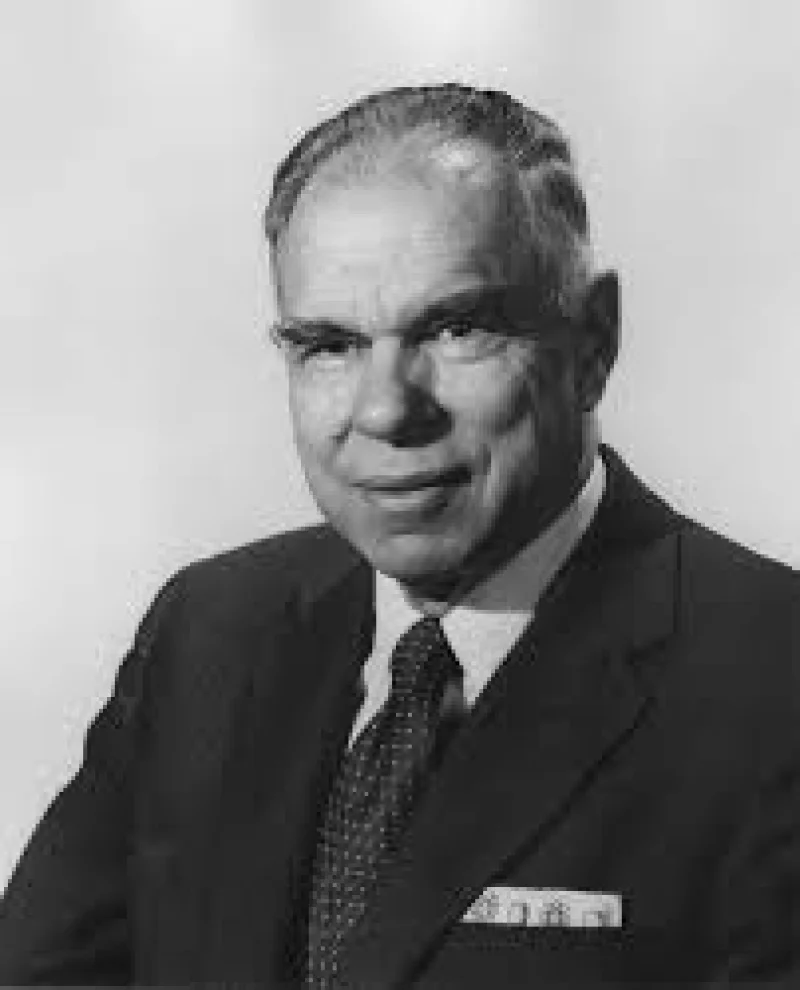Short Summary
Glenn Theodore Seaborg was an American chemist whose groundbreaking work in the discovery and isolation of ten transuranium elements revolutionized the field of chemistry. He is most renowned for his role in the development of the actinide concept, which redefined the periodic table. Seaborg's contributions to science were recognized globally, earning him the Nobel Prize in Chemistry in 1951. His work not only advanced scientific understanding but also had significant implications in nuclear energy and medicine.
Early Life & Education
Born on April 19, 1912, in Ishpeming, Michigan, Glenn Seaborg grew up in a modest household. His family moved to California in 1922, where he attended David Starr Jordan High School. Seaborg showed an early interest in science, fueled by his love of reading and encouragement from dedicated teachers. He pursued higher education at the University of California, Los Angeles, where he earned his bachelor's degree in chemistry in 1934. He then continued his studies at the University of California, Berkeley, obtaining a Ph.D. in chemistry in 1937 under the mentorship of renowned chemist Gilbert N. Lewis.
Career Highlights
Seaborg's career was marked by his tenure at the University of California, Berkeley, where he became a professor and conducted pivotal research on nuclear chemistry. During World War II, he played a crucial role in the Manhattan Project, contributing to the development of the atomic bomb. In 1944, Seaborg proposed the actinide series, which restructured the periodic table. His work led to the discovery of elements such as plutonium, americium, and curium. In the later years of his career, Seaborg served as the chairman of the U.S. Atomic Energy Commission from 1961 to 1971, influencing national science policy.
Major Achievements
- Discovery of Plutonium: Seaborg co-discovered plutonium in 1940, which was crucial for nuclear energy and weaponry.
- Actinide Concept: His introduction of the actinide series transformed the periodic table layout, enhancing chemical understanding.
- Nobel Prize in Chemistry: Awarded in 1951 for discoveries in the chemistry of transuranium elements.
- Chairman of the Atomic Energy Commission: Guided U.S. nuclear policies during the Cold War.
- Element Seaborgium Named: Element 106 was named seaborgium in his honor, marking him as the first person to have an element named after them while still alive.
Famous Quotes
- "The education of young people in science is at least as important, maybe more so, than the research itself."
- "A nation that limits its interests to war and politics and wealth is a nation doomed to decay."
Interesting Facts
- Seaborg was an advocate for science education and advised ten U.S. presidents on scientific matters.
- He held over 40 honorary doctorates from institutions around the world.
- Seaborg was a co-author of over 500 scientific papers and several books.
- He appeared on the television quiz show "What's My Line?" in 1951.
- His discovery of plutonium was initially classified as a military secret during World War II.
Legacy / Influence
Glenn Seaborg's legacy is profound, extending beyond his scientific discoveries to his impact on science education and policy. His restructuring of the periodic table remains integral to chemistry, and his advocacy for nuclear safety and non-proliferation continues to influence policy. The naming of seaborgium in his honor symbolizes his lasting influence, as does his role in shaping science education and policy throughout the 20th century.
FAQ
Q: Why is Glenn Seaborg famous?
A: He is famous for his discovery of transuranium elements and the actinide concept, which significantly advanced the field of chemistry.
Q: What was Glenn Seaborg's major contribution to the periodic table?
A: He introduced the actinide series, which redefined the layout and understanding of the periodic table.
Q: Did Glenn Seaborg receive any awards for his work?
A: Yes, he was awarded the Nobel Prize in Chemistry in 1951 for his discoveries in the chemistry of transuranium elements.
Q: How did Glenn Seaborg influence science policy?
A: As chairman of the U.S. Atomic Energy Commission, he influenced nuclear policy and advocated for science education.











